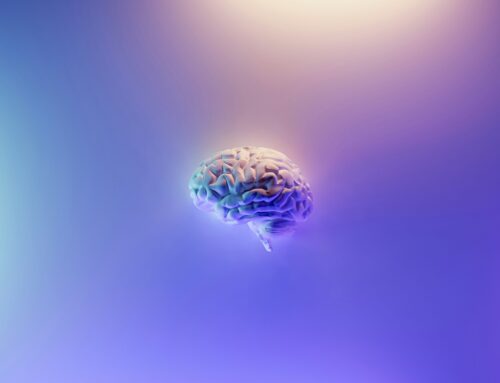Becoming a parent is a profound and transformative experience, influencing many, if not all, aspects of our lives. Often, we are amazed by mothers’ ability to endure interrupted nights of sleep, navigate feeding, and adapt to the myriad changes in their lives. The insight that neuroscience offers delves into changes that extend beyond the visible transformations. Recent research has explored the intricate ways in which the brain adapts to the demands of pregnancy, childbirth, and the postpartum period. So far, there is more research that focuses on changes in women (Kim et al., 2010; Hoekzema et al., 2017; Swain et al., 2014); however, there’s also more exploration of the psychological and neural changes in expectant and new fathers. One significant area of investigation has been the concept of “paternal brain plasticity.” Similar to maternal brain changes, some studies suggest that expectant and new fathers undergo neurological adaptations to prepare them for the caregiving responsibilities associated with fatherhood. So how exactly is nature aiding us in the process of becoming a parent?
Structural Changes
Neuroimaging studies, employing techniques such as magnetic resonance imaging (MRI), have unveiled structural changes in the brains of new mothers. Areas associated with social cognition experience shifts in gray matter volume, while regions linked to maternal motivation, emotional regulation, and bonding with the baby undergo significant alterations (Kim et al., 2010; Hoekzema et al., 2017). This change allows women to better understand their baby’s nonverbal cues and navigate social interactions more adeptly. Interestingly, the same type of studies have demonstrated changes in the brains of fathers during the perinatal period too. Again, they were particularly evident in brain regions associated with social cognition and empathy, which helps with building the bond and attachment with the baby.
Hormonal Fluctuations
Pregnancy and childbirth involve intricate hormonal ballets, with estrogen, progesterone, oxytocin, and prolactin taking center stage. These hormones not only regulate maternal behavior but also influence brain functioning. Oxytocin, often referred to as the “love hormone,” plays a pivotal role in emotional bonding and social attachment while prolactin supports breastfeeding (Kim et al., 2010; Hoekzema et al., 2017). This enhances the emotional bond between mother and baby and promotes feelings of maternal warmth and affection. While not experiencing the same hormonal shifts as mothers, fathers also experience changes in hormone levels, particularly oxytocin and prolactin. Studies have shown that levels of oxytocin increase in expectant fathers, especially during the transition to fatherhood, promoting bonding with the infant, whereas a prolactin increase potentially influences paternal caregiving behaviors.
Emotional Processing
The amygdala, a key player in processing emotions, exhibits heightened activity in response to emotional stimuli in new mothers. This increased sensitivity aids mothers in responding to their infants’ needs and emotional cues, fostering a deeper connection. The intricate dance of emotions within the amygdala contributes to the nuanced art of maternal responsiveness (Swain et al., 2014). This allows mothers to stay more emotionally attuned to their baby’s needs. When mothers hear their baby cry, the amygdala, a brain structure involved in processing emotions and detecting threats, shows increased activity, enabling them to respond promptly and effectively to soothe their infant. This emotional significance is reinforced through evolutionary mechanisms that prioritize the care and protection of infants. So as uncomfortable as it may be for many of us to hear a baby cry, for new mothers, it is highlighted by the changes mentioned. Research has shown that expectant and new fathers experience changes in mood, stress levels, and neural responses to emotional stimuli too. Fathers may also develop stronger caregiving instincts and increased sensitivity to their infant’s needs over time, especially if they receive support from their partners and social networks.
Caregiving-Related Brain Networks
Have you ever heard anybody say that with all of the hardships of parenthood, the smile of a baby can make it all worthwhile? Well, although it is not entirely true, there’s some science behind it. The brain’s reward system, encompassing regions like the striatum and prefrontal cortex, lights up when mothers engage in nurturing behaviors. These brain networks support maternal bonding, motivation to care for the baby, and the experience of pleasure and reward in caregiving activities. This neurological orchestra reinforces the joy and fulfillment that mothers find in caring for their infants (Swain et al., 2014). So the experience of a sense of joy and fulfillment when a mother cuddles and plays with her baby, thanks to the activation of her brain’s reward centers, reinforces her maternal bond and motivates her to engage in caregiving activities. Similar shifts in reward processing brain regions were observed in fathers, which can potentially help them appropriately respond to infant cues and stay engaged with caregiving tasks.
Memory and Cognitive Changes
Pregnancy and the postpartum period may bring about changes in memory and cognitive functioning, often humorously termed “baby brain” or “momnesia.” These changes, attributed to hormonal fluctuations and sleep deprivation, are temporary and not indicative of permanent alterations in brain structure. Understanding these cognitive shifts helps new mothers and fathers navigate the challenges and changes with compassion and self-awareness (Kim et al., 2010; Hoekzema et al., 2017). Knowing that with time and support the mind’s capacity will return to pre-pregnancy state can be comforting but also emphasizes the importance of rest and taking time for self-care.
What about mothers with postnatal depression?
Postnatal depression (PND) can influence the neurobiological changes associated with motherhood. Studies suggest that PND may cause changes in brain structure, hormone levels, and how neurotransmitters function. These changes can impact how mothers bond with and care for their babies. For instance, research shows that mothers with PND have different brain activity and connections related to emotions and rewards compared to non-depressed mothers. Hormonal imbalances, such as disruptions in cortisol, oxytocin, and estrogen levels, can also affect mood regulation and maternal behavior in women with PND, making bonding and caregiving more challenging. Not all mothers with PND will experience the same brain changes – factors like the severity of symptoms, how long they last, and how they respond to treatment can also affect how PND impacts a mother’s brain. That’s why detecting PND early and providing appropriate support and treatment is crucial for helping mothers maintain good mental health and adjusting to motherhood.
As presented, the evidence suggests that parenthood can lead to notable neurobiological adaptations in both parents as they prepare for and adjust to the demands of caring for a newborn. While the magnitude and timing of these changes may differ between mothers and fathers, I think it can be comforting to first of all, know that the changes can or will occur and that we will in some way change and secondly, it does seem that nature is mostly on our side! It’s important to note that while research sheds light on the initial adjustments, there’s still much to uncover about how these changes evolve over time. Some brain modifications observed in new parents might gradually return to their previous state as they grow accustomed to the demands of caring for their newborns. Through further longitudinal studies, scientists aim to gain a comprehensive understanding of the dynamic nature of these changes as parents journey through the various stages of raising their children.
If you want to prepare for the arrival of your baby or you struggle with the adjustment to parenthood, our team is here to help. We offer individual, couples and family therapy – just send us an email at: hello@silverliningtherapy.co
Literature:
- Kim et al. (2010): Structural MRI Reveals Brain Structural Changes in Pregnancy and Postpartum. Published in Nature Neuroscience.
- Hoekzema et al. (2017): Gray Matter Volume Reduction in the Social Brain Network in First-Time Mothers. Published in Nature Neuroscience.
- Swain et al. (2014): Neural Mechanisms of Maternal-Infant Bonding: Reward, Social Networks, and Oxytocin. Published in Proceedings of the National Academy of Sciences.
- Lebel et al. (2019): White Matter Integrity Changes in Emotional Processing and Bonding Pathways. Published in NeuroImage.
- Lebel C, Walton M, Letourneau N, Giesbrecht GF, Kaplan BJ, Dewey D, Prendergast AJ, McCrindle BW, Tomfohr-Madsen L, APrON Study Team. “Prepartum and postpartum maternal depressive symptoms are related to children’s brain structure in preschool.” Biological psychiatry. 2016 Mar 15;80(11):859-68.
- Feldman, R., Gordon, I., & Zagoory-Sharon, O. (2011). Maternal and paternal plasma, salivary, and urinary oxytocin and parent–infant synchrony: considering stress and affiliation components of human bonding. Developmental science, 14(4), 752-761.
- Kim, P., Rigo, P., Mayes, L. C., Feldman, R., Leckman, J. F., & Swain, J. E. (2014). Neural plasticity in fathers of human infants. Social neuroscience, 9(5), 522-535.
- Mascaro, J. S., Hackett, P. D., & Rilling, J. K. (2013). Testicular volume is inversely correlated with nurturing-related brain activity in human fathers. Proceedings of the National Academy of Sciences, 110(39), 15746-15751.






